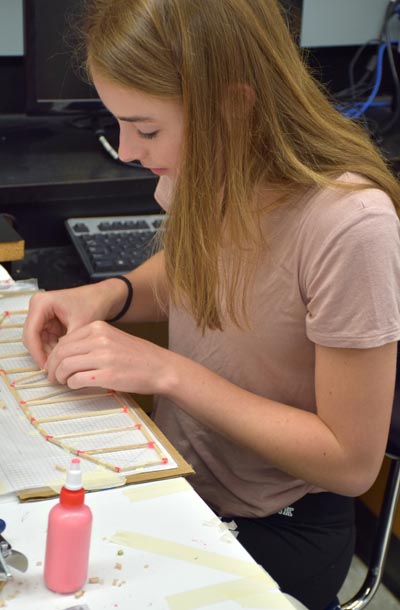Physics Builds Bridge to Real World Applications
May 26, 2016
Betty Watson’s AP Physics 1 students are currently building miniature wood bridges as part of their final project. The bridges will, on finals day, be tested by hanging masses near the centers until the bridges break. Bridges will be assessed based on design, quality, and quantity of weight held.
“Students do a little bit of research online, figure out what kind of bridge they like, draw it out to scale on paper, and then use that as a template to cut and glue their bridges,” explained Watson. “On finals day, we actually load weight on the bridges and test them to see how much they’ll hold.”
“It’s a common AP physics end of the year project,” Watson explained. “Lots of other schools do bridge projects.”
Watson said the bridge project is an educational activity due to “several different things. Partly, it’s using the different concepts of force and Newtons Law, and applying it to bridges. Also, the whole process is important, from design to construction to testing. It’s always fun to see that whole process that we never have time for during the school year.”
Prior to the bridge building process, students learned about and then presented on a famous real-world bridge, teaching the class about the bridge structure and building process.
“What I thought was interesting was learning about the bridges during the presentations, and learning about the design of the bridges and how they were constructed,” said junior Zoe Portnoff.
One of the challenges is making effective structures out of weak materials. “They’re balsa wood bridges, and [the students] have limited construction materials,” said Watson
Nevertheless, Watson said that the bridge project remains a popular one among students. “I was surprised, because my AP 2 students this year wanted to build bridges again. I didn’t let them, because they’d already done it, but that was what they wanted to do again. I thought it was a good sign, that they wanted to do it a second time.”

